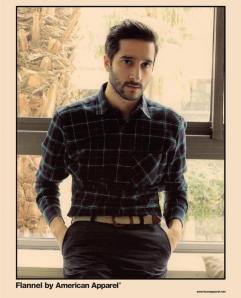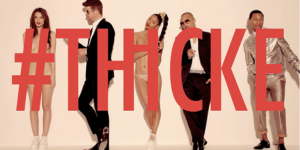Hipster Sexism & Hipster Racism
Hipster sexism, also known as liberal sexism and ironic sexism as defined by Alissa Quart, is defined as “the objectification of women but in a manner that uses mockery, quotation marks, and paradox”, involving a form of sexism that is satirical and ironic. Perpetrators of this form of self-aware sexism deem it acceptable, given that they are conscious of the inherent sexism and objectification carried out by them. It is rooted in the idea that sexism is an outdated institution in which people do not engage in anymore, making the demonstration of sexism seem satirical and ironic. It may be differentiated from classic sexism but is ultimately ironic as it is still a deviant form of sexism.
One might wonder about how hipster sexism functions. With this, I quote a blog from Yale College – ““For the media savvy [generation], irony means that you can look as if you are not seduced by the mass media, while being seduced by [it] … [and] wearing a knowing smirk,” writes Douglas. In this sense, the pleasure of ‘admiring’ someone like Richardson (who incidentally directed the latest Miley Cyrus video which caused a global uproar two days ago) actually comes from “the feeling that you are reading against the grain.” This can be seen as a form of structural oppression (Marx & Engels) which lead to oppression and a “heterogenous commonality” in which females are continually objectified through the shared perspective of actors in groups. Reflecting on Rose’s reading, this is essentially is “developing a style nobody can deal with” which would essentially “fortify communities of resistance” in the form of females since mainstream hegemonic masculinity does support hipster sexism to a certain extent, which would essentially reduce rejection rates.
I will proceed to quote some examples to support my stand with regards to sexism in hipster images and art. In the global context, we have prime examples such as this one from American Apparel – a clothing brand commonly endorsed by hipsters. The images that I have curated for this blog post are a characteristic of hipster-dom photography – consisting of random themes, images which serve no purpose and border on hedonism with also the standard hipster photography style that resembles old school film photography.
*Note that the same shirt is modelled very differently on both genders.
In global media, we also have the works of hipster-style photographer Terry Richardson who has shot the likes of Miley Cyrus, Lady Gaga and Amy Winehouse, bringing the sexualization in hipster photography to mainstream media.
Robin Thicke’s Video, “Blurred Lines” also stirred up reactions after it was released – mainly because it featured stark naked models.
http://www.youtube.com/watch?v=zwT6DZCQi9k
I quote Thicke on why his video was stylized as such – “”We tried to do everything that was taboo … everything that is completely derogatory towards women. Because all three of us are happily married with children, we were like, ‘We’re the perfect guys to make fun of this.”
In the local context, renown photographers with a hipster edge such as Alvelyn Alko also demonstrate this satirical characteristic in their works. Alko is a particularly interesting choice as she belongs to a young breed of Singaporeans who have been pushing the boundaries of photographers and art – in 2012, she was one of the co-organizers for The Chiobu Movement, an open call for art centred on the female.
It is interesting to note that the “male gaze” (Mulvey) is still prevalent – and may even be amplified in the hipster subculture as compared to mainstream culture. The male gaze refers to the “frequent framing of objects of visual art so that the viewer is situated in a ‘masculine’ position of appreciation.” The hipster subculture does this more so than the mainstream culture in a blatant, in-your-face style. Overall, sexism against females more often than not characterizes the arena of hipster images and art.
Similarly, a blurred line is being drawn for the observable practice of “hipster racism”, wherein which irony and satire are used to masked racism. Central to the understanding of a hipster is the ideology of irony, of which hipsters actively employ and perform through their actions, dressing and in their opinions. “Hipster Irony” is performed when one acts intentionally in ways incongruent to their self-image.

Hipster racism happens when one intentionally adopts and trivializes aspects of a race different from her/his own in the name of harmless fun, or to If American Apparel is guilty of nefarious hipster sexism, then it’s counterpart in hipster fashion is equally guilty in hipster racism.
By adding “Navajo” to the name of the items, Urban Outfitters has trivialized one of the biggest Native American tribes and has reduced the entire culture into a vague reference of aboriginal exoticness just so make their products more appealing. Similarly, when Gidley describes how “urban culture” is used as a euphemism black culture to increase it’s appeal to the wider non-black audience. The word euphemism implies the underlying hegemonic discourse surround race – particularly between the black immigrant population and the white indigenous British (Gidley 2007:146). While Gidley argues that this intermeshing of cultures can lead to a eventually leads to a “two-tone sensibility” that “stands in opposition from common-sense racism”, (Gridley 2007:143), hipster racism exists as an overt form of racism where there is no interaction between two cultures, only appropriation from the dominant race. This casual appropriation of significant cultural motif is deemed as racist as it reduces complex culture to suit the convenience for the mass market and inevitably “erases the [black] identity” of the culture and allows “non-[black] people to enter it’s identity casually”. (Gidley 2007:146)
While it is understood that hipsters actively seek to present themselves in ways different from mainstream society, the self-consciousness need to be different seems does not penetrate through existing categories of thought. Through hipster sexism and racism – and examining how the most recognizable hipster brands are the most unapologetic reproducer of hegemonic images of power between gender and race, it makes us feel that hipsters are no different from the rest of the society, and that their attempts to be different can be futile and superficial if one only actively tries to establish one’s uniqueness in aesthetics and not in thought.












Is sexism to be found in the production or consumption of subcultural artifacts? I ask because you talk about ironic hipster sexism but it’s unclear whether you see it as ‘real’ sexism or whether you agree that, once defined as ironic, it loses is sexist connotations and becomes okay. I see how the Yale blogger thinks about this, but when you bring it the idea of structural inequalities in the Marxist sense I lose the direction of your argument. After all, hipster women are participating in these ironic displays….but aren’t hipsters smart enough to “get it”? Can you perhaps respond a bit more on this point?
What makes Richardson’s photography or Thicke’s video “hipster” exactly? How do they differ from much of the mainstream heteronormativity that is blatant in popular culture? [The song, for example, doesn’t sound indie to me….] I like your point about the male gaze in this regard, but how do you know it’s sexist (see my opening question)?
When you write that “hipster racism exists as an overt form of racism where there is no interaction between two cultures”, how do you know there is no interaction? Is this an assumption? Be sure to find support for such assertions when you want to make them.
You’ve got some quotes that I’m not sure about where they come from…like “the feeling that you are reading against the grain.” and “a blog from Yale College.” Use hyper-links or properly reference these please.
You’re missing part of a sentence here: “…from her/his own in the name of harmless fun, or to If American Apparel is guilty of nefarious hipster…”